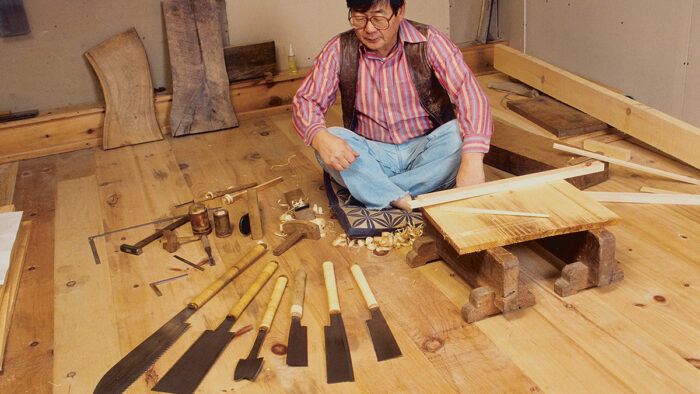All about Handsaws
Learn the fundamentals of ripsaws, crosscut saws, and Japanese saws.
Power tools have largely replaced handsaws in the toolboxes of many carpenters but furniture makers, especially those who like to cut joinery the traditional way, could not get along without them. There are many styles and sizes to choose from and yet there are only two traditional types of Western saw — rip and crosscut. Japanese crosscut saws, which many Western woodworkers have adopted, are fundamentally different.
What Counts:
• Tooth style (rip or crosscut)
• Number of teeth per inch
• Western or Japanese pattern
• Quality of steel used in blade
Saw teeth differ for ripping and crosscutting
Ripsaws have chisel-like teeth filed straight across, perpendicular to the blade, and are designed to cut with the grain. The teeth of a crosscut saw are more complicated because they are slightly angled, allowing them to slice cleanly through wood fiber when they make a cut. Compared to crosscut saws, ripsaws have larger and fewer teeth, referenced as teeth per inch (tpi), and deeper gullets (the space between teeth). Another factor is set, the alternating outward lean of the teeth, which creates the width of cut (or kerf). Too much set makes for a rough cut; too little and the saw will bind.
Handsaws for ripping come in a variety of sizes, each for different uses. Panel saws are the largest and were historically the cabinetmakers mainstay for working large boards and lumber. Today, the tablesaw has reduced the need to do panel-saw work by hand, but traditionalists still find these tools adequate for small jobs. The dovetail saw, also available with a smaller handle and known as a gent saw, is a much smaller tool than the panel saw; it is used most commonly to cut joinery, such as the pins and tails of dovetails.
Crosscut saws also come in the size of a panel saw, and in smaller versions, known as tenon saws. For hand-tool woodworking, the tenon saw is the tool of choice.
Beyond the traditional Western saw
More recent hybrid saws blur the distinction between rip and crosscut tooth patterns. Shorter than average, these blades are designed for general use and may cut on both the pull and push stroke.
Japanese-saw makers have taken an entirely different approach. Unlike Western saws, the very thin Japanese blades cut on the pull stroke. Crosscut teeth also are shaped differently; they are formed into extremely sharp points with complex bevels and angles that are a good deal more difficult to sharpen. As a result, many woodworking supply houses sell Japanese saws with replaceable blades — when the original gets dull, it makes more sense to buy a new one.
Details make the saw
The more points (or teeth) per inch, the finer and slower the cut. A carpenter showing up for work 50 years ago might have carried several crosscut saws with 7 to 12 points per inch, plus a ripsaw or two with 5 or 6 points per inch. Those would probably be good benchmarks for anyone buying full-size saws today. By way of contrast, small saws used for joinery, such as dovetail saws and tenon saws, often have 14 or 15 teeth per inch.
With all saws, the overall quality of the steel used in the blade is very important. Newer saws that have been impulse-hardened stay sharp for a long time, but the steel is too hard to be filed. Once dull, the saw is just discarded. Handles aren’t that important: a cheap plastic handle on an otherwise good saw can always be replaced. A good-quality saw can be resharpened many times.
To view the entire article, please click the View PDF button below:
Fine Woodworking Recommended Products

Suizan Japanese Pull Saw

Stanley Powerlock 16-ft. tape measure

Veritas Precision Square





















Log in or create an account to post a comment.
Sign up Log in